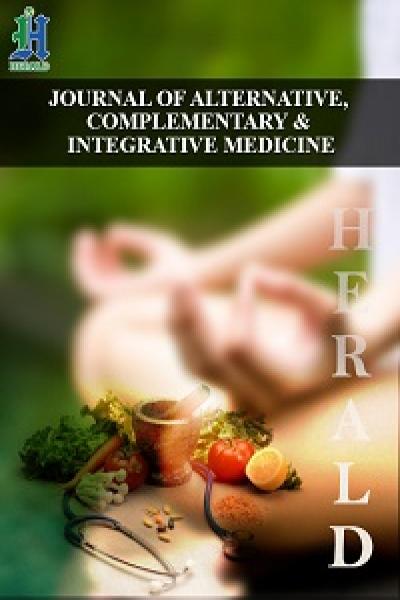
Acupuncture Treatment for Low Blood Pressure and Shock
*Corresponding Author(s):
Peng LiSchool Of Medicine, Department Of Physiology, Shanghai Medical College Of Fudan University, University Of California, Irvine, Shanghai, China, United States
Tel: +1 9499880672,
Email:pengli@uci.edu
Abstract
In 1980-1990 we have a series of animals (dogs, rats and rabbits) which undergone experiments using nitroprusside-induced low blood pressure and hemorrhage or endotoxic shock, by using Electroacupuncture (EA) applied on S36 and p6 acupoint to increase BP and antishock. These effects are related to the activation of central cholinergic system in hypothalamus and lower brain stem. These results can be a strong spot for clinical application of EA to treat low BP and shock.
Keywords
Central cholinergic function; Electroacupuncture (EA); Endotoxic shock; Hemorrhage; Neostigmine; Nitroprusside
INTRODUCTION
EXPERIMENTAL STUDIES
In 1983 Xiao and Li began to study acupuncture treatment on experimental low blood pressure [2]
The acupuncture effect
Cardiac output and organ blood flow changes
Baroreceptor reflex resetting
The neurotransmitters related to the pressor effect of EA
Central cholinergic function in the EA pressor effect [3]
Effect of DPN stimulation on NP infusion induced low blood pressure
Effect of somatic nerve stimulation on endotoxin shock
BRAIN CHOLINERGIC MECHANISM IN THE EA OR SOMATIC NERVE STIMULATION INDUCED PRESSOR RESPONSE [6].
The pressor effect of brain cholinergic activation
• Microinjection of neostigmine or carbachol into bilateral RVLM, the MBP and stimulation of PAG induced pressor response increases significantly. If atropine was microinjected into RVLM, ICV neostigmine has no pressor response. Suggesting that the pressor effect induced by ICV neostigmine is related to the activation of cholinergic M-receptor in RVLM
• Stimulating superficial nerve induced pressor response is related to central cholinergic system activation [7]. Superficial Peroneal Nerve (SPN) contains more type IV fibers. Stimulation of SPN (0.1-0.3 mA, 5-10 Hz, 0.5 ms) the MBP and pressor response (MBP max) induced by stimulation of dorsal PAG increased significantly. If atropine was microinjected into RVLM, the MBP and MBP max decreased significantly
• Thus, SPN stimulation could activate cholinergic system in the brain, increase sympathetic activity and defense reaction related cardiovascular response. EA and somatic nerve stimulation could increase BP in low BP animals
• Change of brain cholinergic concentration during defense area or SPN stimulation. During stimulation of defense area or SPN, the Ach concentration of perfusion fluid from ventricle and RVLM increased markedly, and returned to normal level after stop stimulation for 30 min. Modulation of neurally mediated vasodepression and bradycardia by electroacupuncture through opioids in nucleus tractus solitaries [8]
• Stimulation of vagal afferent endings with intravenous Phenylbiguanide (PBG) causes both bradycardiaand vasodepression, simulating neurally mediated syncope. Activation of μ-opioid receptors in the Nucleus Tractus Solitarius (NTS) increases blood pressure. Electroacupuncture (EA) stimulation of somatosensory nerves underneath acupoints P5-6, ST36-37, LI6-7 or G37-39 selectively but differentially modulates sympathoexcitatory responses. We therefore hypothesized that EA stimulation at P5-6 or ST36-37, but not LI6-7 or G37-39 acupoints, inhibits the bradycardia and vasodepression through μ-opioid receptor mechanism in the NTS. We observed that stimulation at acupoints P5-6 and ST36-37 overlying the deep somatosensory nerves and LI6-7 and G37-39 overlying cutaneous nerves differentially evoked NTS neural activity in anesthetized and ventilated animals. Thirty-min of EA-stimulation at P5-6 or ST36-37 reduced the depressor and bradycardia responses to PBG while EA at LI6-7 or G37-39 did not. Congruent with the hemodynamic responses, EA at P5-6 and ST36-37, but not at LI6-7 and G37-39, reduced vagally evoked activity of cardiovascular NTS cells. Finally, opioid receptor blockade in the NTS with naloxone or a specific μ-receptor antagonist reversed. P5-6 EA-inhibition of the depressor, bradycardia and vagally evoked NTS activity. These data suggest that point specific EA stimulation inhibits PBG-induced vasodepression and bradycardia responses through a μ-opioid mechanism in the NTS.
CONCLUSION
ACKNOWLEDGEMENT
REFERENCES
- Hunan Medical College (1973) Analysis of 160 cases using new acupuncture technique to treat shock. New Medical Journal 2: 10.
- Yong-Fu X, Shu-Xin L, Zi-Fu D, Peng L (1983) Mechanism of pressor effect of electroacupuncture on nitroprusside hypotension in dogs. Acta Physiol Sin 35: 257-263.
- Yong-Fu X, Peng L (1983) Effect of deep peroneal nerve stimulation on renal nerve discharge under different levels of blood pressure in rabbits. Acta Physiol Sin 35: 432-439.
- Xiao YF, Li P (1985) Influence of scopolamine microinjected into the brain on pressor effect of electro-acupuncture in dog during NP-induced hypotension. Acta Physiol Sin 37: 31-36.
- Xiang-Ying S, Jun Y, Tai Y (1983) Pressor effect produced by stimulation of somatic nerve on hemorrhagic hypotension in conscious rats. Acta Physiol Sin 35?264-270.
- Xiao YF, Xia QG, Li P (1989) Pressor response to intracerebro-ventricular injection of neostigmine in normotensive and hypotensive rabbits. Chinese J Physiol Sci 5: 26-32.
- Zhu DN, Cao QY, Qian ZW, Li P (1994) The changes of plasma concentrations of corticosterone, glucose and lipids in the stress-induced hypertensive rat. Chin J Physiol Sci 10: 146-154.
- Tjen-A-Looi SC, Li P, Li M, Longhurst JC (2012) Modulation of cardiopulmonary depressor reflex in nucleus ambiguus by electroacupuncture: roles of opioids and γ-aminobutyric acid. Am J Physiol Regul Integr Comp Physiol 302: 833-844..
Citation: Li P (2018) Acupuncture Treatment for Low Blood Pressure and Shock. J Altern Complement Integr Med 4: 047.
Copyright: © 2018 Peng Li, et al. This is an open-access article distributed under the terms of the Creative Commons Attribution License, which permits unrestricted use, distribution, and reproduction in any medium, provided the original author and source are credited.

